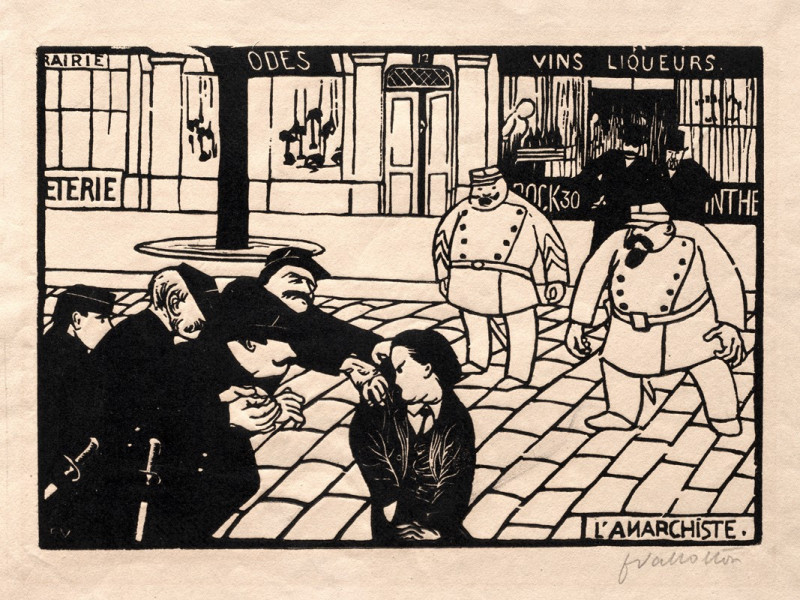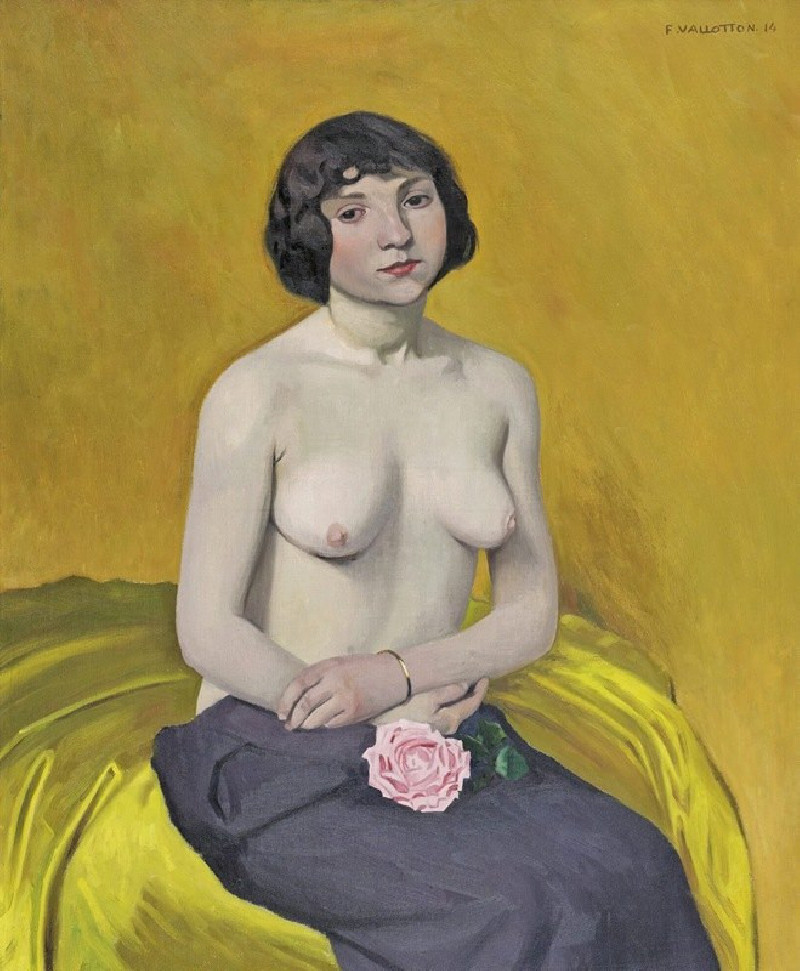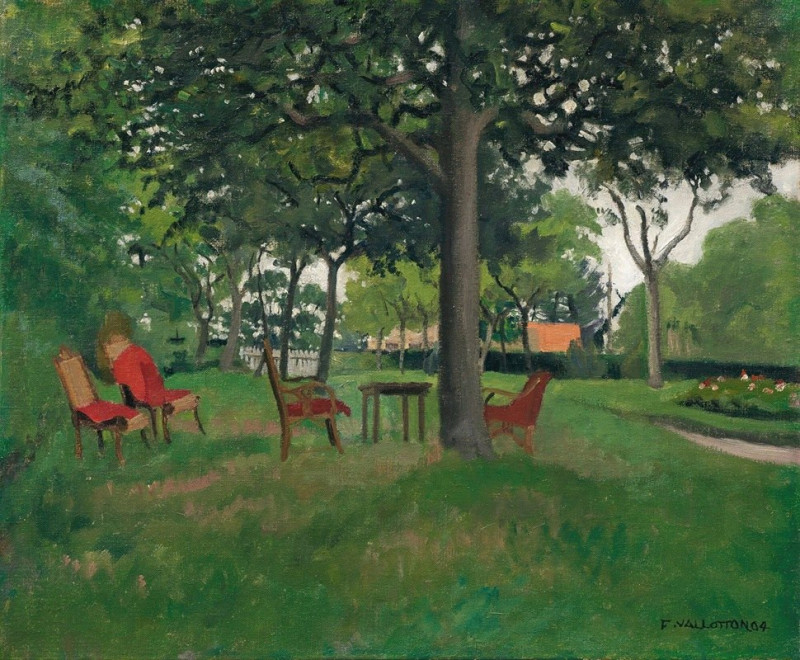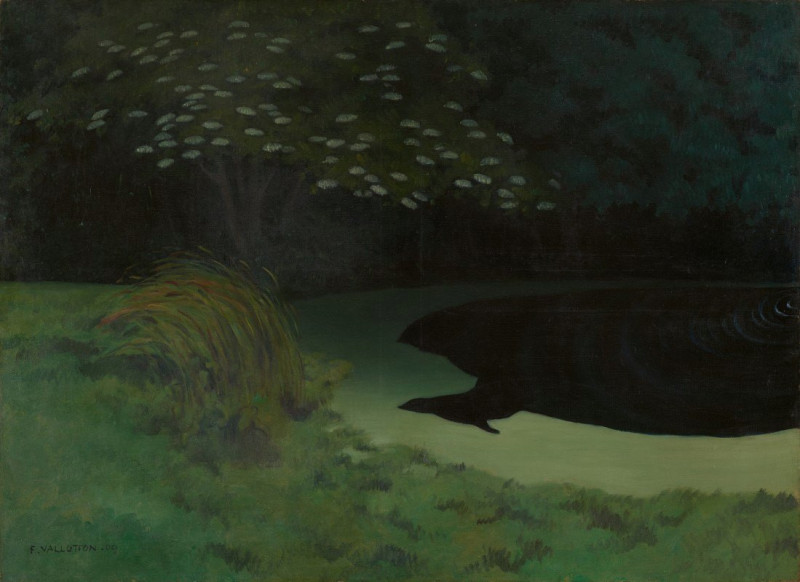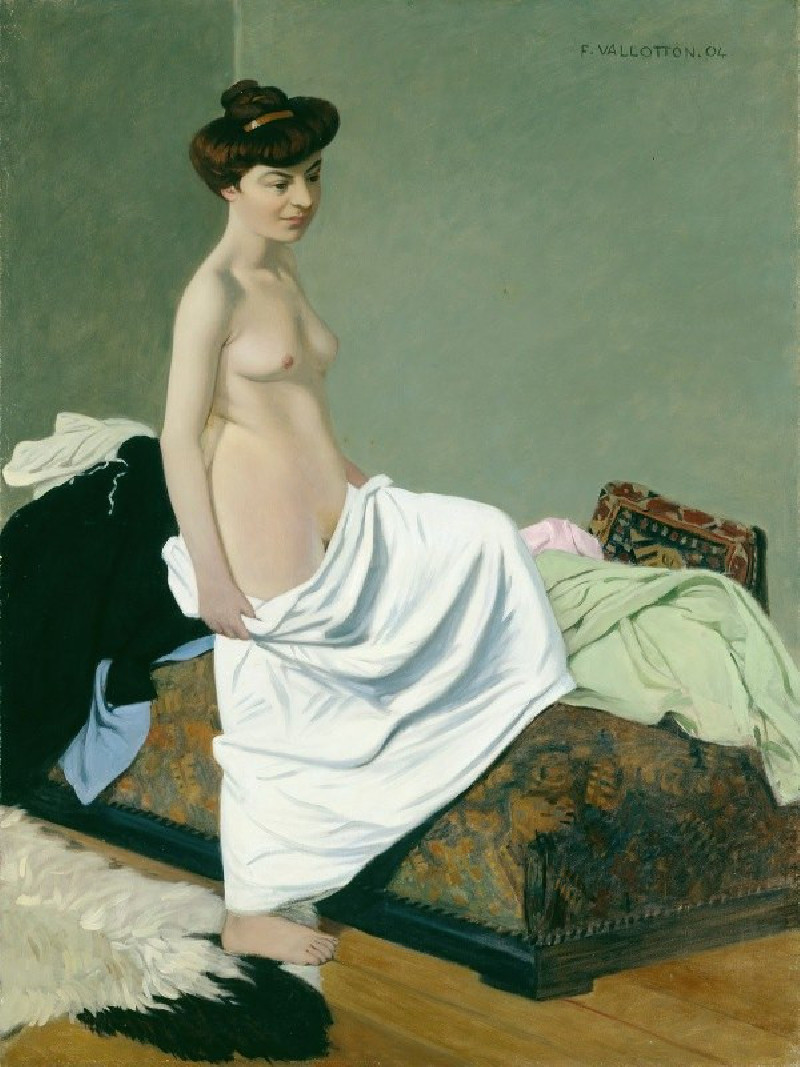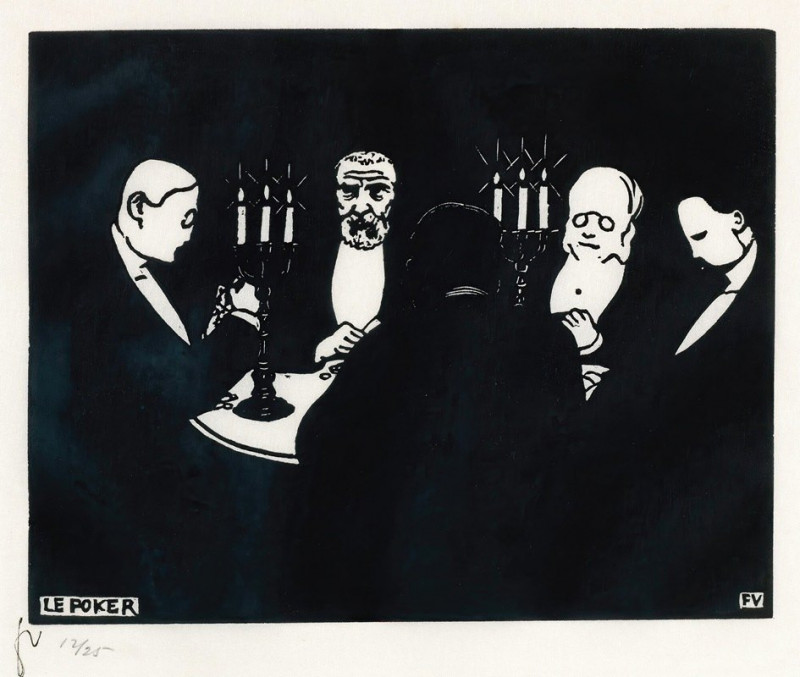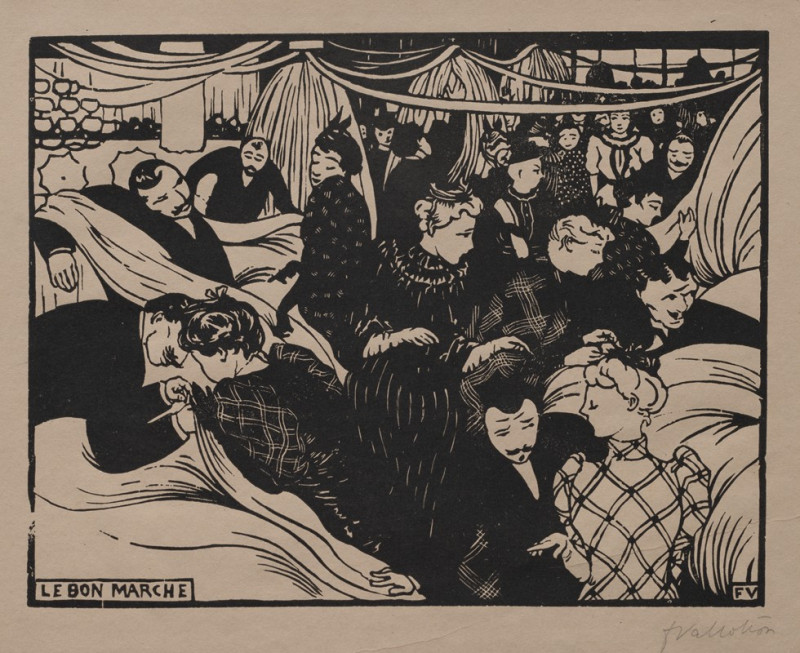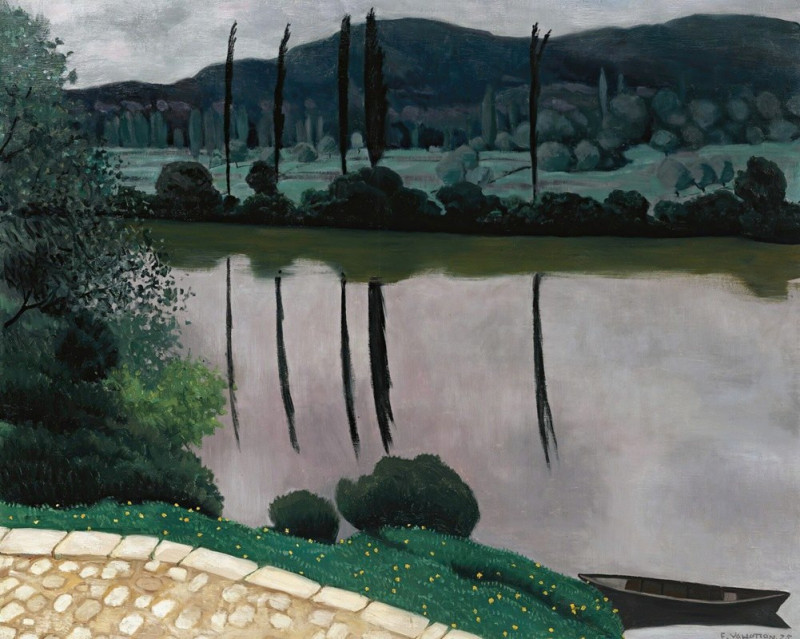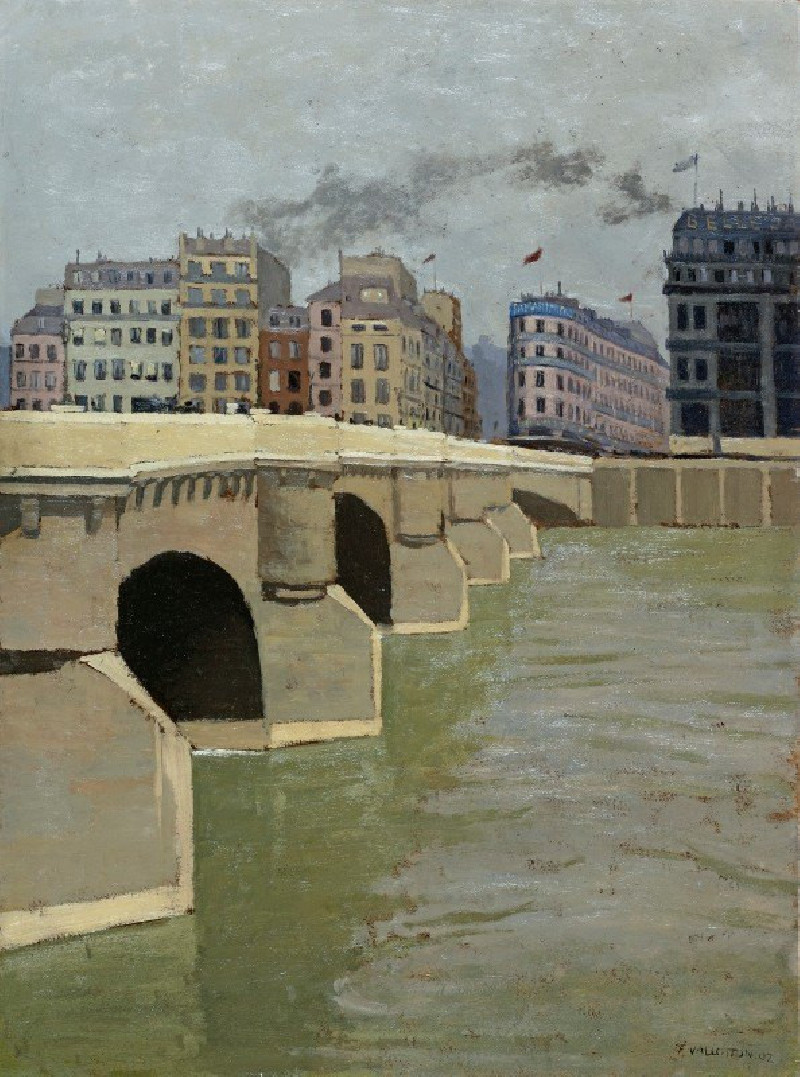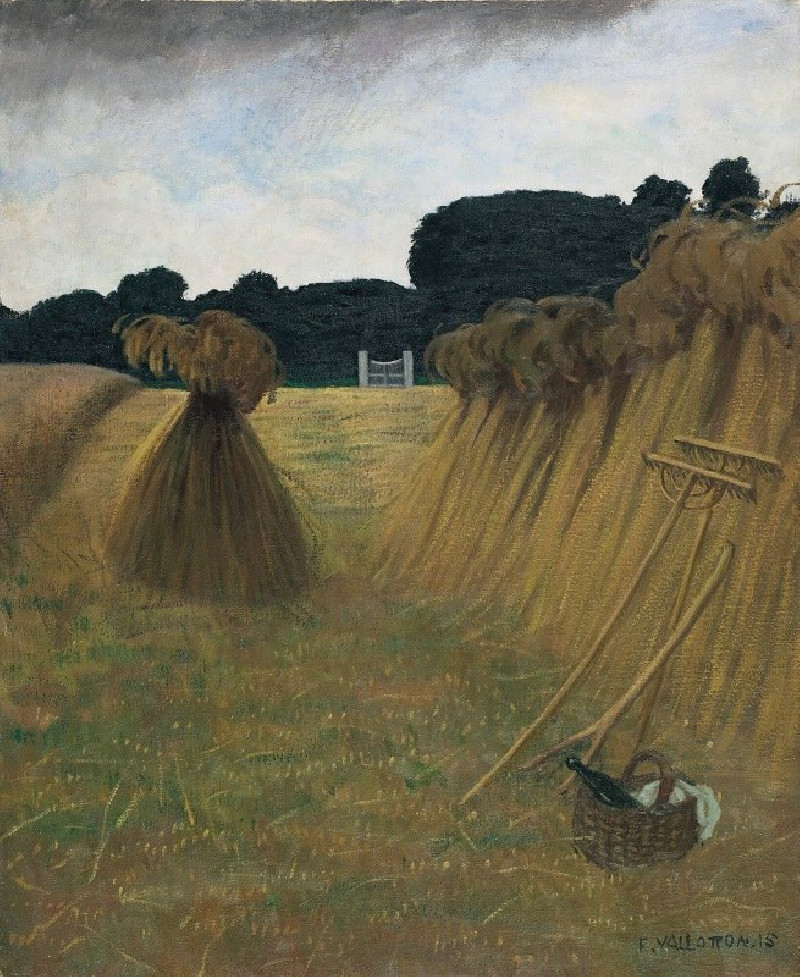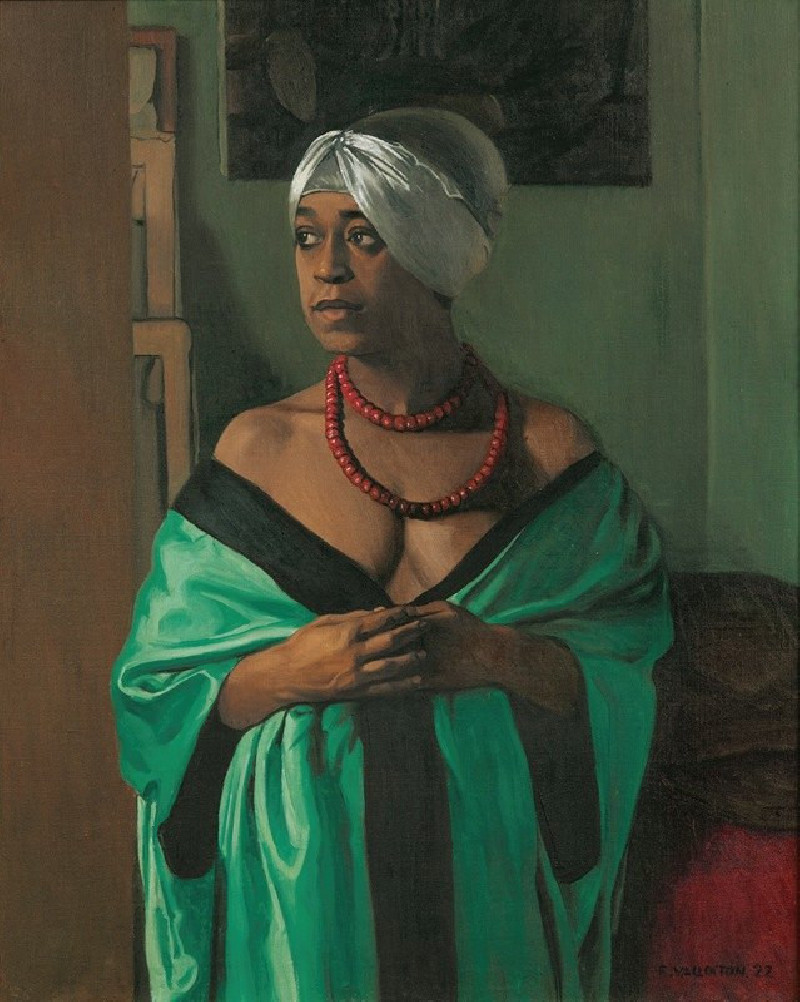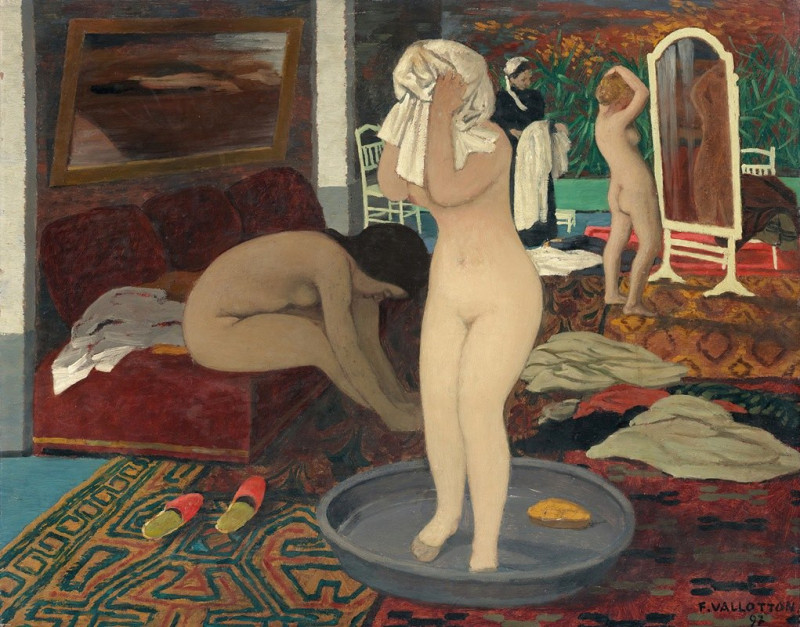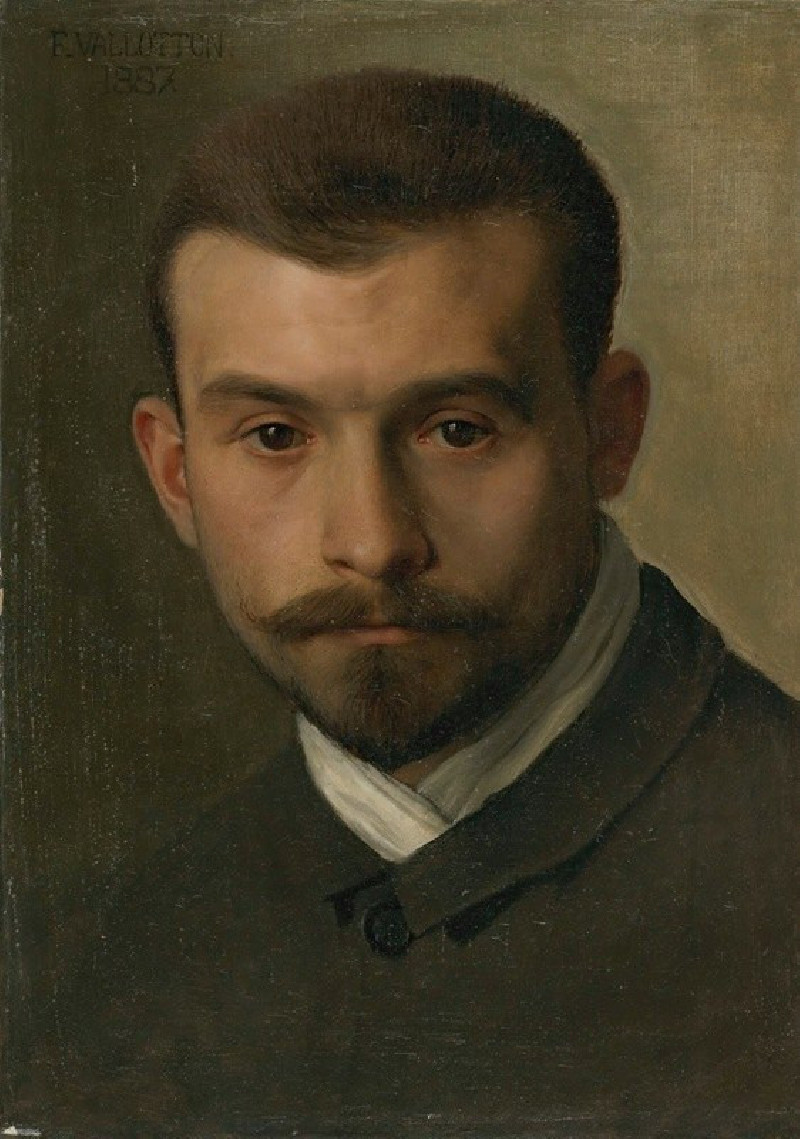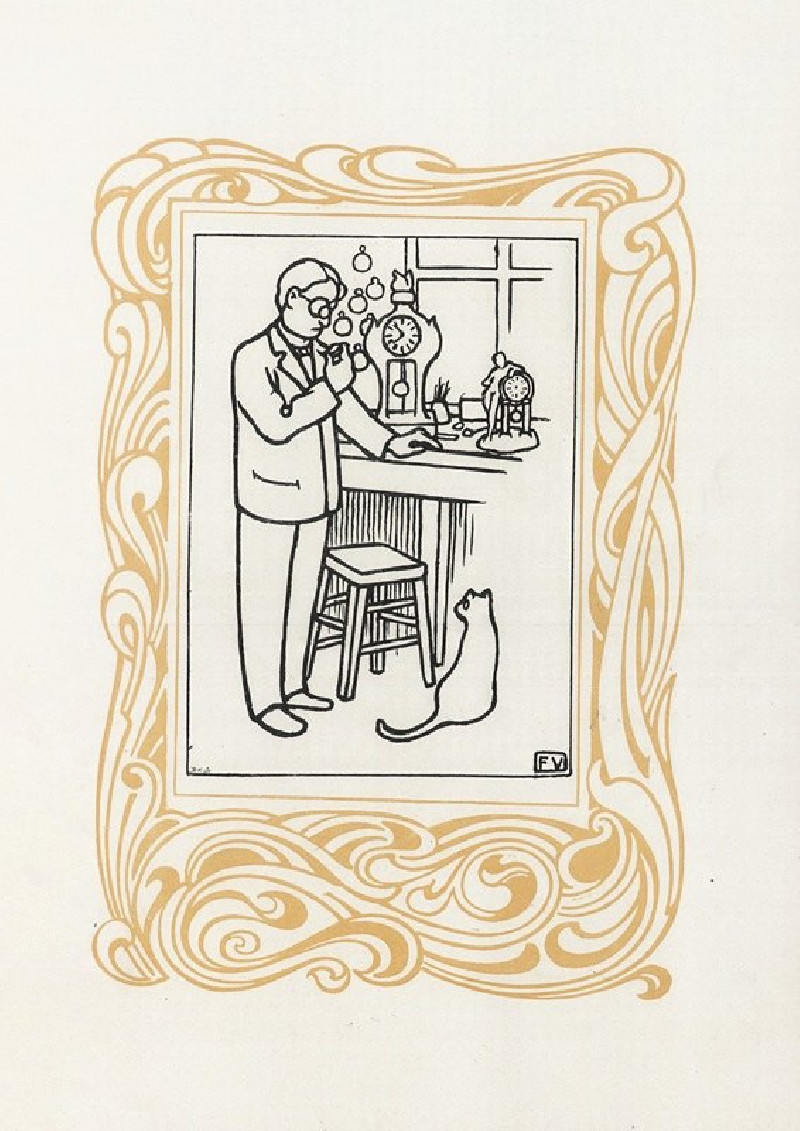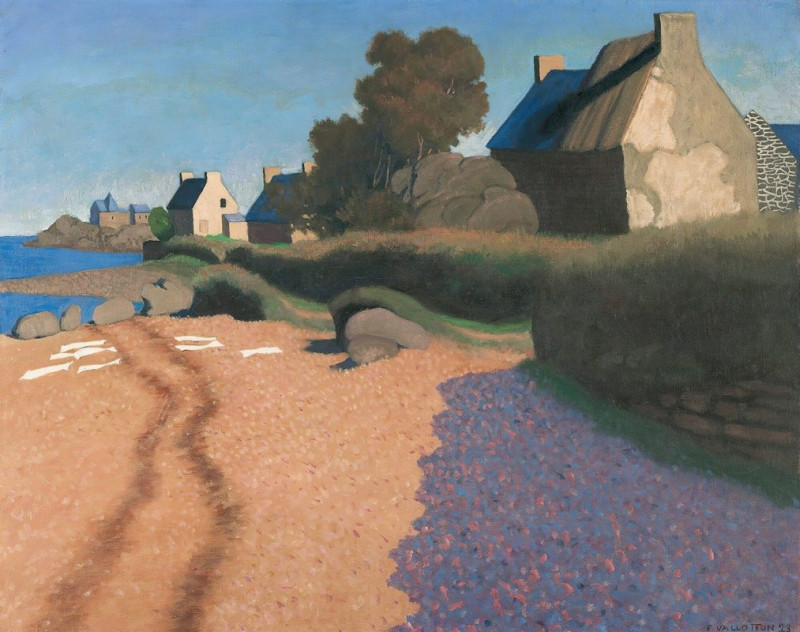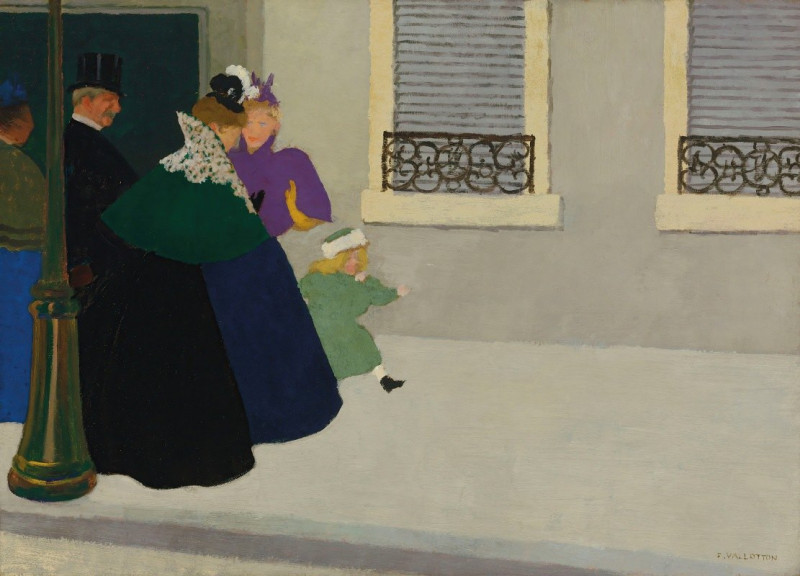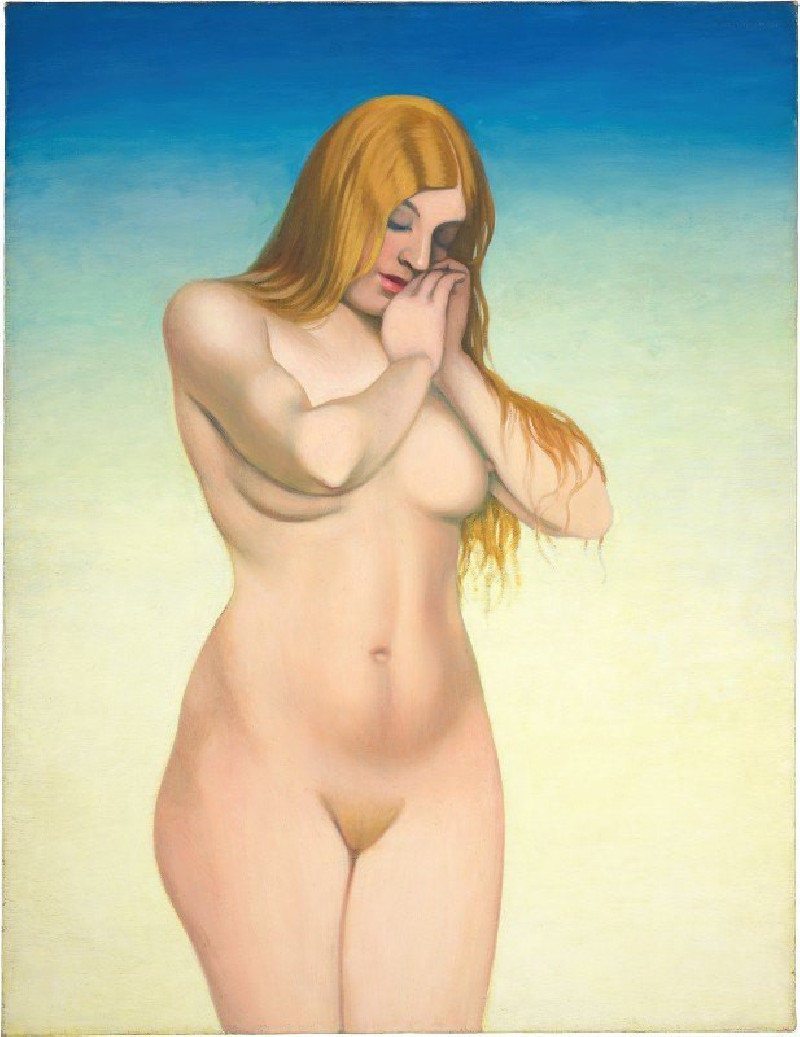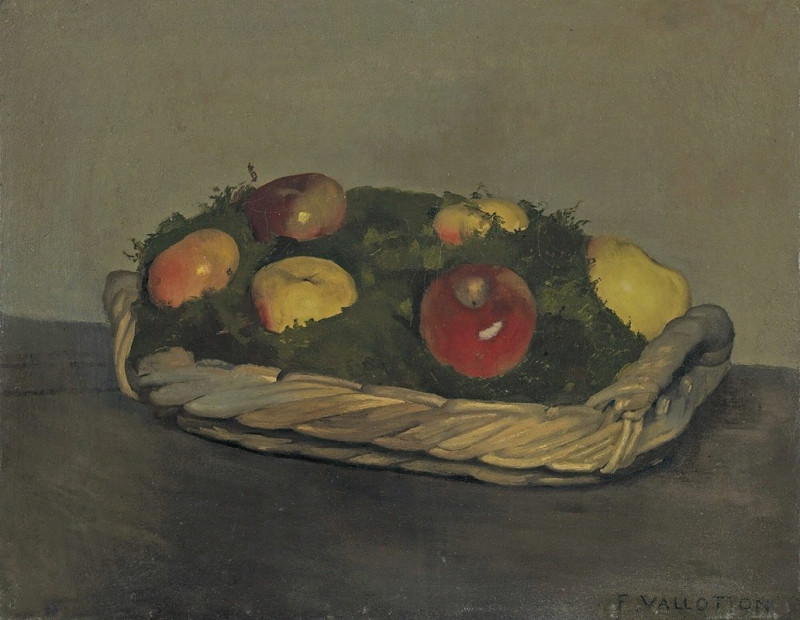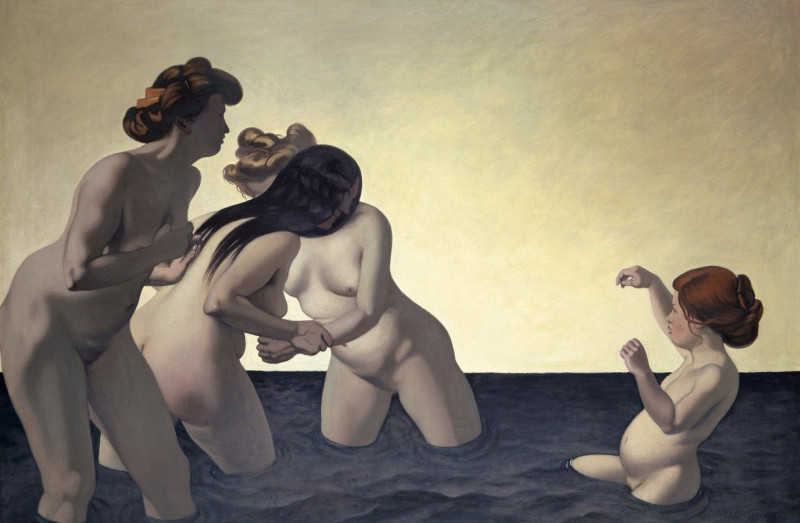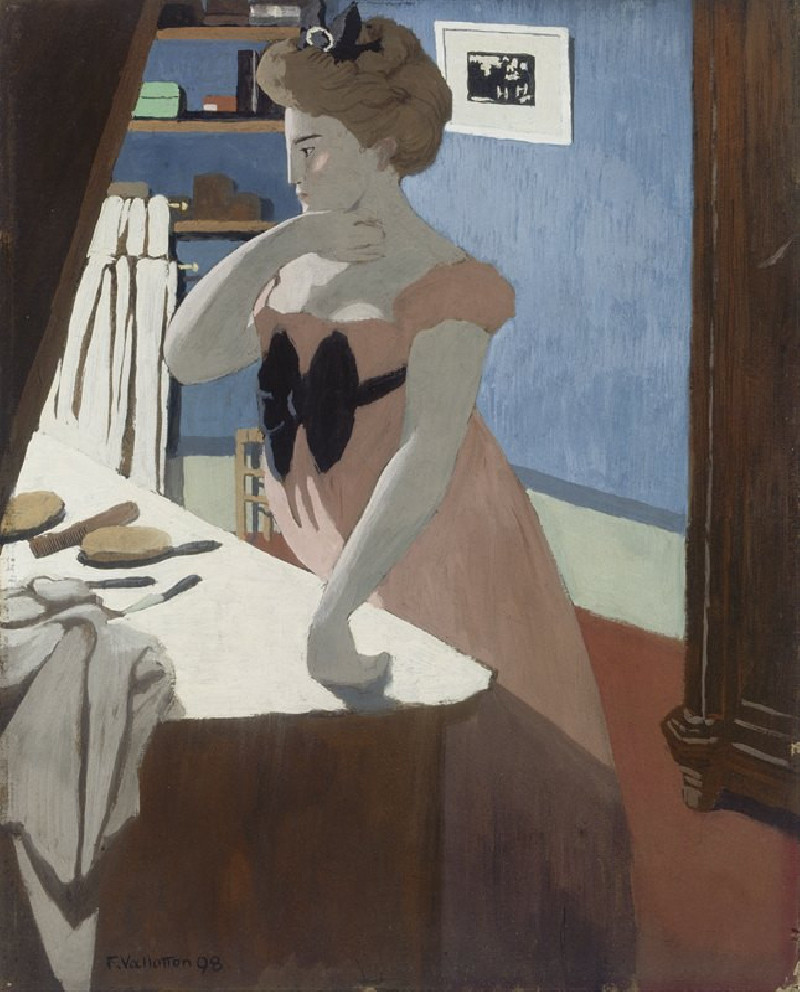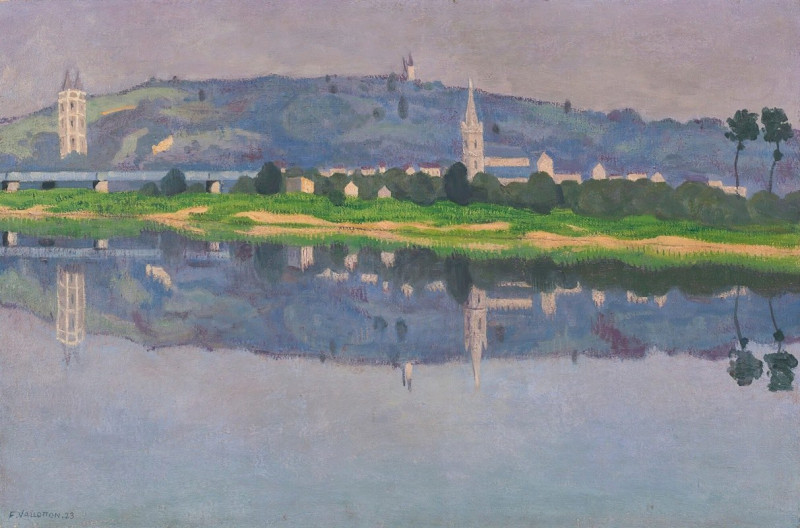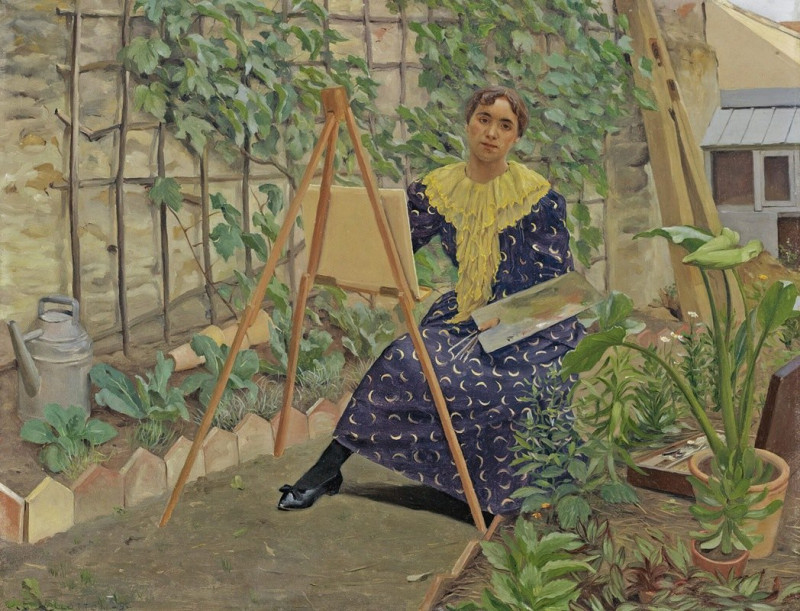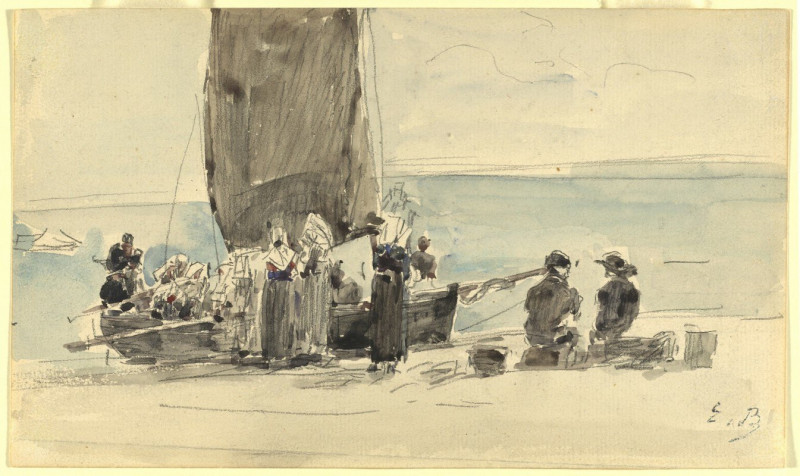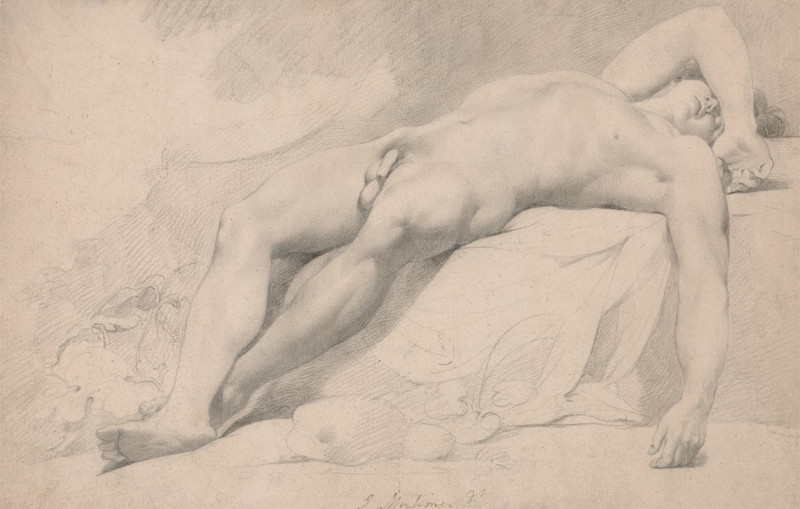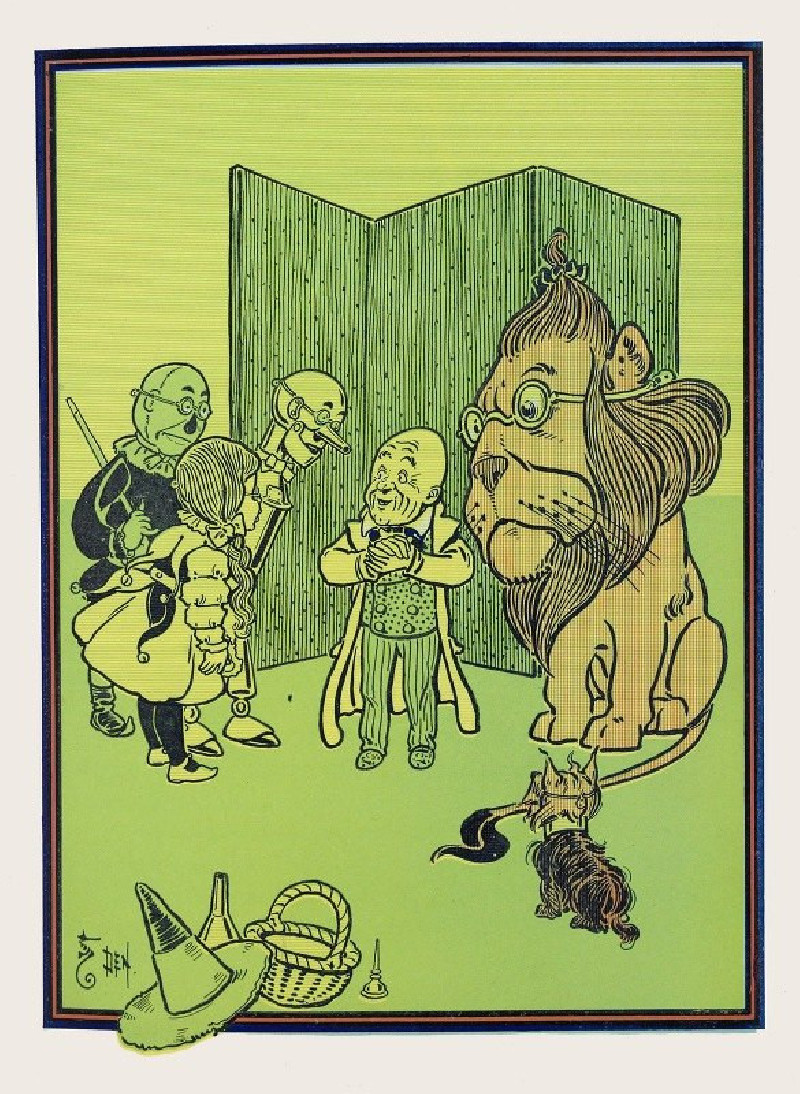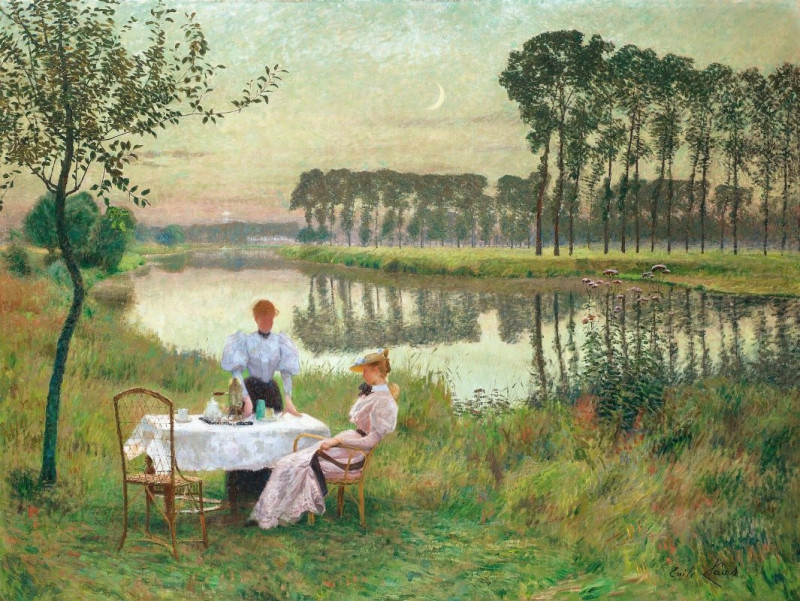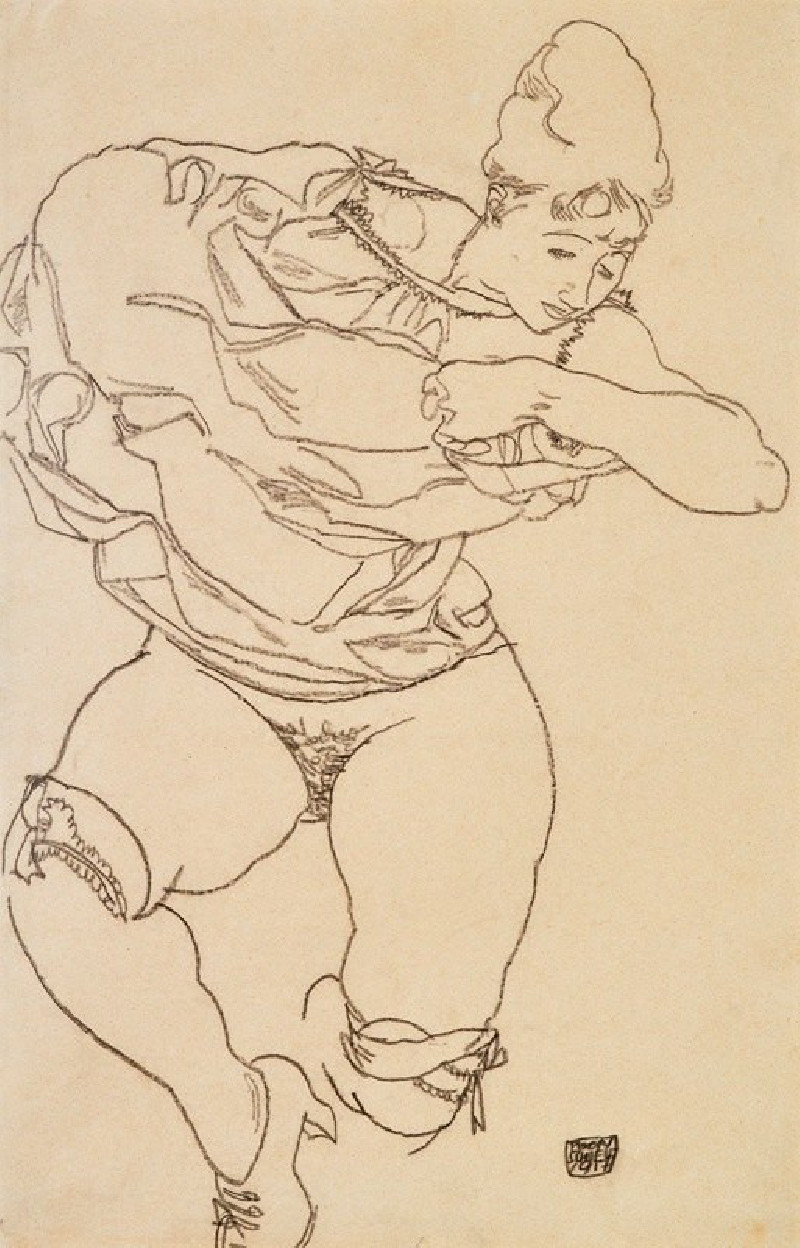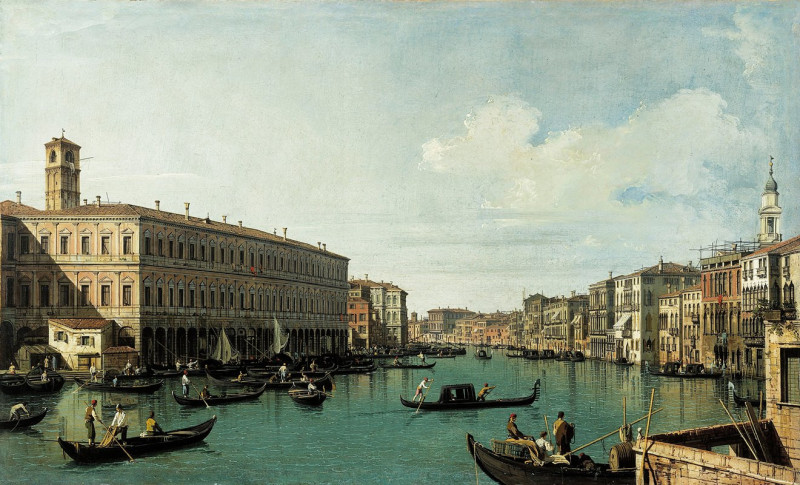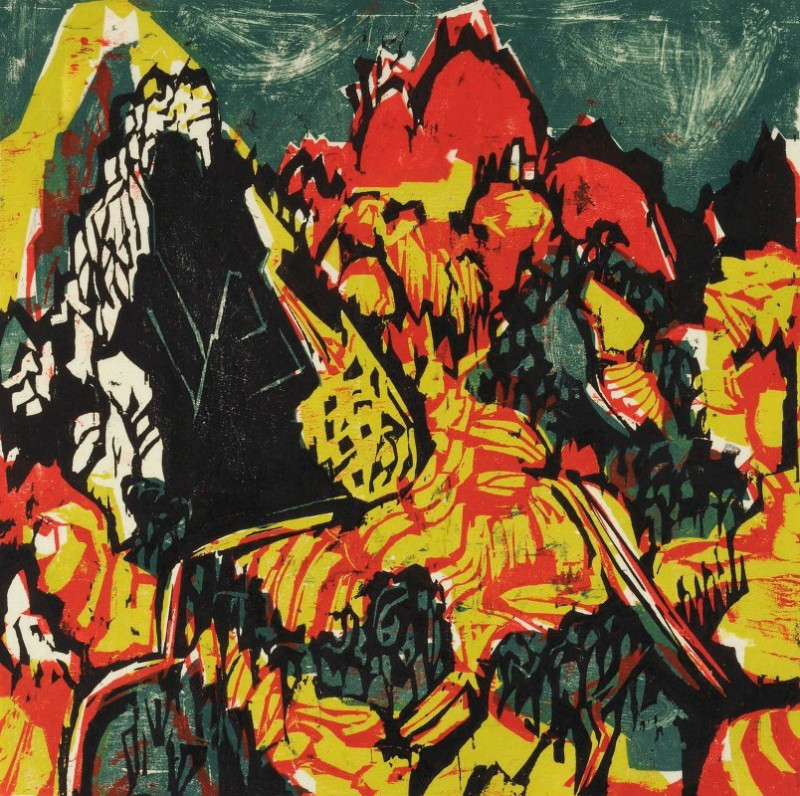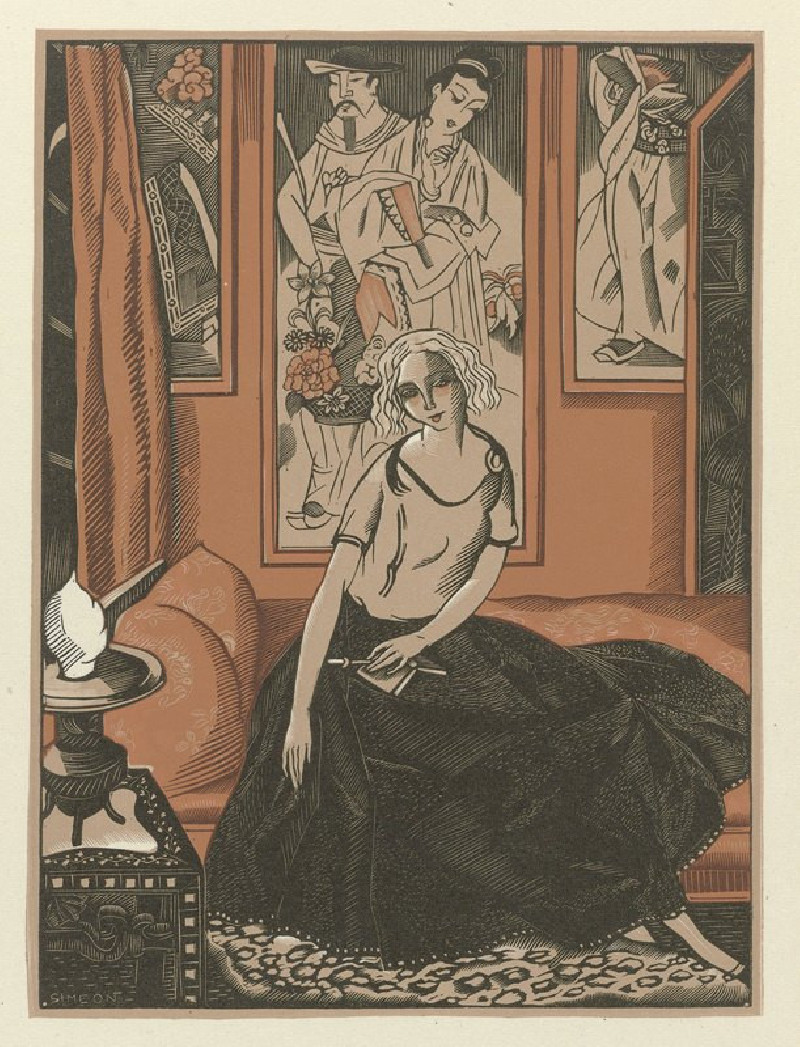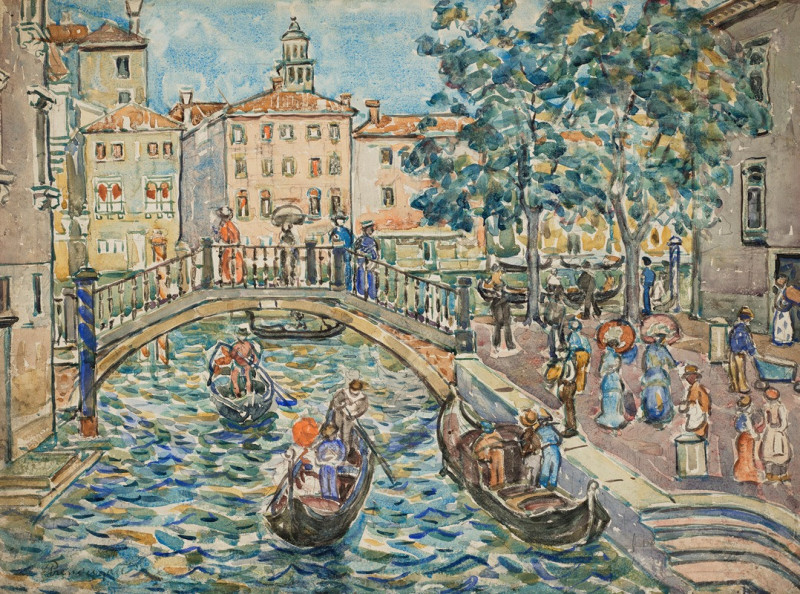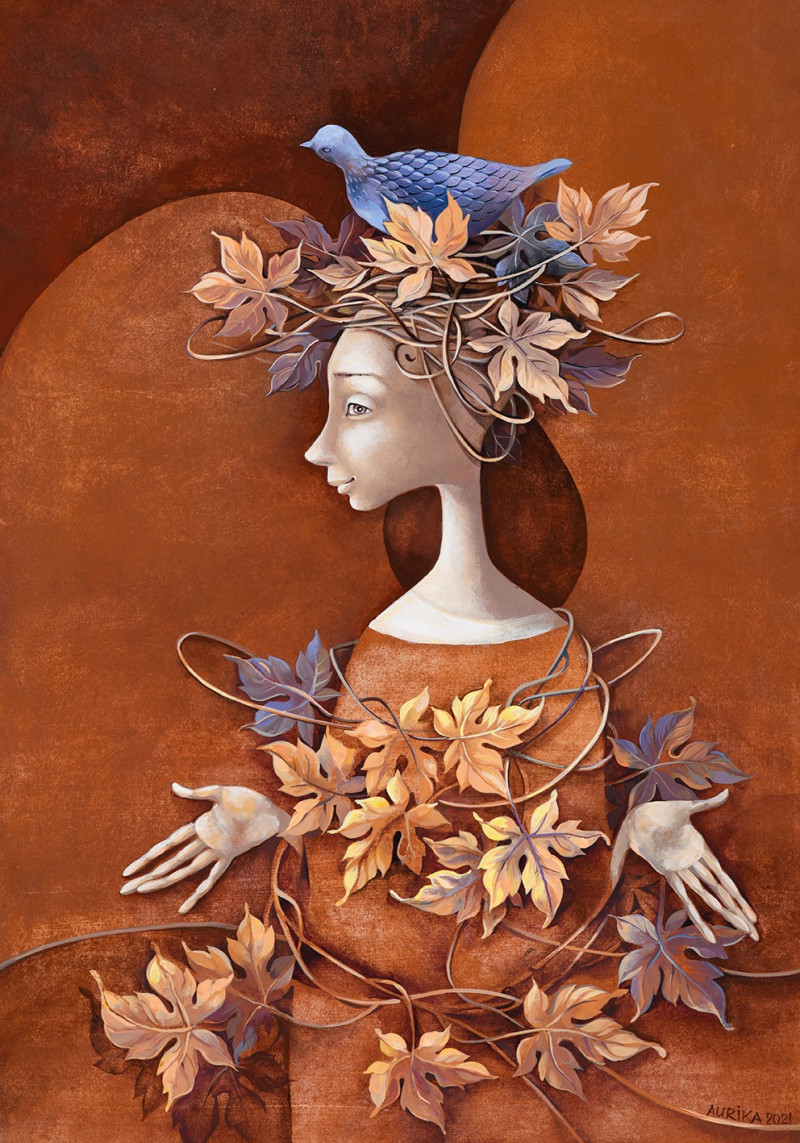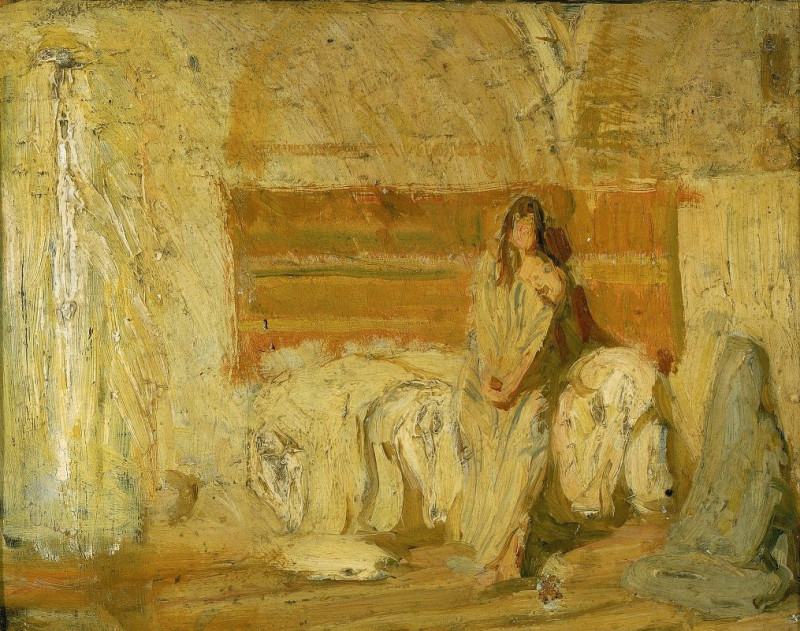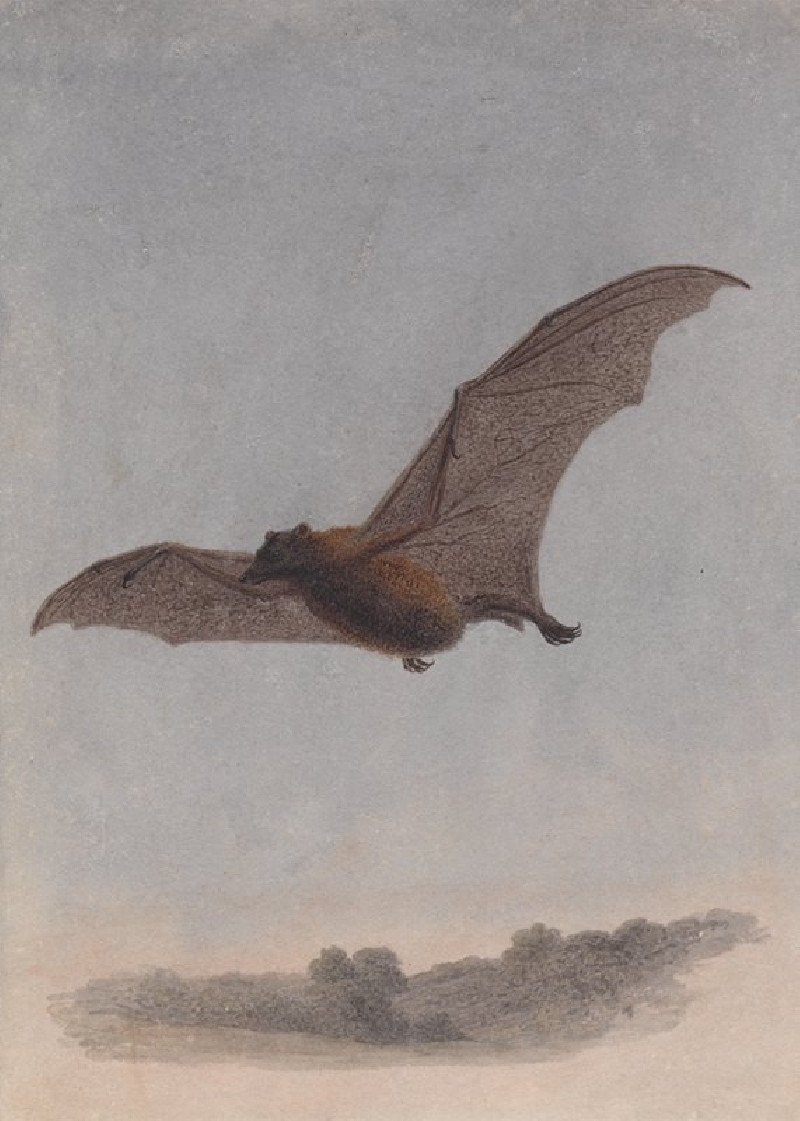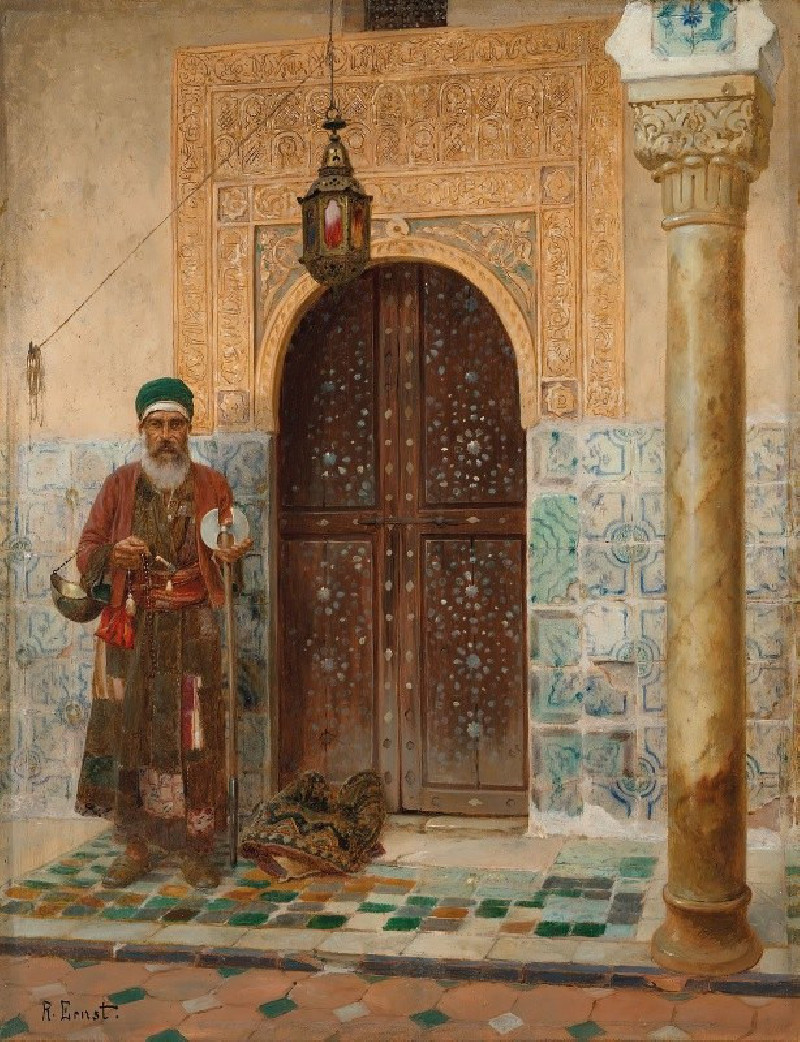The Anarchist (1892)
Technique: Giclée quality print
Recommended by our customers
More about this artwork
"The Anarchist," a compelling piece created by Félix Vallotton in 1892, artfully explores themes of social and political tension through its stark, vivid visual style. This painting captures a dramatic moment in a public square, employing Vallotton's signature use of stark contrasts and clean lines that balance between realism and graphic art.In the foreground, the central figure of an anarchist is depicted at a critical moment of arrest, being roughly handled by a group of men. Their expressions and forceful engagement contribute to an atmosphere of urgency and confrontation. The anarchist, dressed distinctively with a dark overcoat and kneeled down, contrasts sharply with his captors, suggesting themes of individual resistance against larger societal forces.In the backdrop, Vallotton sets the scene in what appears to be a European city square, marked by business facades advertising wines and liquors. The presence of men in uniform further intensifies the painting's narrative, alluding to themes of authority and control.
Delivery
Returns
Félix Édouard Vallotton (December 28, 1865 – December 29, 1925) was a Swiss and French painter and printmaker associated with the group of artists known as Les Nabis. He was an important figure in the development of the modern woodcut. He painted portraits, landscapes, nudes, still lifes, and other subjects in an unemotional, realistic style.

